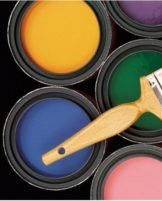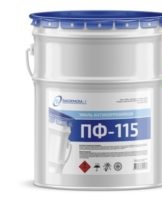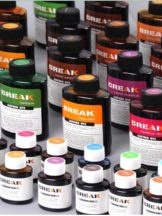Types of suitable pipe paints and instructions for their application
The main purpose of pipe paint is considered corrosion protection. Most often, during repairs, you need to paint the heating system. The use of high-quality dyes helps to give the surface an attractive appearance and provides protection against adverse external factors. To achieve the desired results, it is important to properly prepare the surface and follow the instructions for applying the substance.
Requirements for coloring compositions
For the internal painting of pipes, it is important to choose the right substances. The heating system is exposed to high temperatures and may experience fluctuations. In addition, there are external factors that negatively affect the condition of steel pipes.
Therefore, when choosing substances, it is recommended to follow these rules:
- resistance to high temperatures - the dye should not deform or crack;
- anti-corrosion properties - it is important that the substance provides reliable protection against rust;
- no toxic properties - when the dye is heated, harmful substances should not enter the air;
- resistance to high humidity, aggressive factors, mechanical damage;
- the strength of the coating - it is important that it does not peel off;
- preservation of shade and structure over time.
When choosing a coating for pipes, preference should be given to compositions intended for application to metal products.
Adapted formulas
Pipe enamels and stains fall into several categories. To select a suitable variety, it is important to study their characteristics.
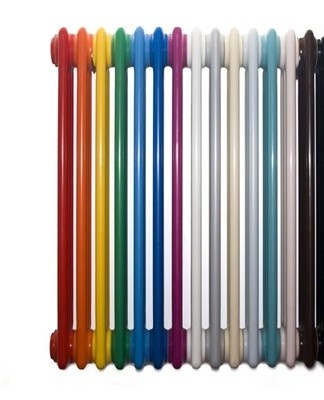
Alkyd enamels
These materials include alkyd varnish - glyphthalic or pentaphthalic. They also contain herbal ingredients and solvents such as white spirit. The substance is characterized by a high degree of elasticity and durability. Today, such enamels are very popular. The advantages of the substances include affordable cost, resistance to high temperatures, excellent hiding power when applied in a relatively thin layer. Also, the substances are distinguished by a high degree of wear resistance and a wide color palette.
acrylic enamels
This dye does not have a pronounced smell. Therefore, it is often used for indoor work. After applying the acrylic enamel, the coating becomes perfectly smooth. Feels like plastic to the touch.
Not all acrylic enamels are resistant to high temperatures. Therefore, when buying, it is worth studying the information about the possible range. To be applied to heating pipes, the enamel must withstand at least +80 degrees.
The drying time is considered a significant advantage of the material. The polymerization of the first layer occurs in 10 to 60 minutes. It takes 1-2 hours for the second coat to dry.To obtain a good result, it is recommended to prime the surface. When carrying out the work, moisture should be avoided on the surface.
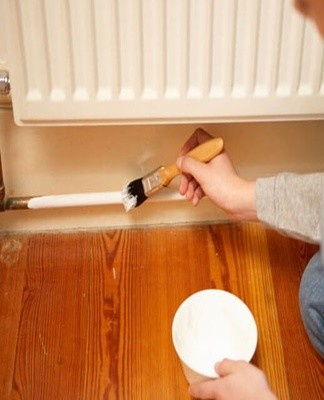
The consistency of acrylic is similar to thick sour cream. It doesn't flow. This avoids the formation of burrs.The only drawback is considered insufficient resistance to the influence of external factors.
Water-dispersing compositions
These paints are often used for the application of pipes. They have many advantages. The main advantages of these types of coatings are the absence of a specific smell. In addition, these substances dry very quickly.
Oil
This material is made from organic oils. Previously, these paints were practically the only option for painting metal surfaces. Indeed, they have many advantages. These include excellent covering power, resistance to abrasion and high temperatures.
However, now such compositions are practically not used. They have a pungent smell and cannot withstand heating up to 80 degrees. In addition, such compositions reduce heat transfer from batteries and are characterized by uneven application. Also, oil paints take a long time to dry.
How to paint correctly
For the correct painting of surfaces, a number of requirements must be met. The preparatory work is of great importance.
Preparatory work
The quality of staining is affected by the preparatory work. It is recommended to proceed as follows:
- Remove dust and dirt with a damp cloth.
- Delete old layers. In this case, it is important to apply the solution to the pipe and cover it with a film. Then it is recommended to remove the coating with a wire brush.
- Sand the surfaces with sandpaper.
- Degrease with white spirit. Any mildly alkaline solution will also work.
- Apply an anti-corrosion primer to improve paint adhesion.

Dyeing
For effective surface painting, it is recommended to consider the battery temperature at the time of application. In this case, the pipes or radiators must be cold. Therefore, it is worth painting them in the summer. If an urgent repair is needed, you will have to turn off the heat supply for some time.
When the paint is applied to a hot surface, the layer may be uneven. As it dries, the composition will begin to crack. Therefore, the work will have to be redone.
When painting pipes, you should follow these rules:
- Apply the dye evenly. For this, it is permissible to use a gun or a brush.
- It is important to avoid unpainted areas. Moreover, this is true even in inconspicuous places.
- Start at the top of the pipeline.
- After applying the first layer, it must be well dried. Only after complete drying of the composition is it allowed to carry out the next coloring. This will help achieve even coverage.
- If stains appear, they should be shaded with a brush or removed with a rag.
Plastic pipes do not need to be painted. They already have an attractive appearance. If there is such a need, it is worth using a special composition for plastic. Acrylic compounds are generally used. The surface of the pipes must be pre-coated with a primer.
Additional tips and tricks
When painting water supply and heating pipes, certain rules should be followed:
- If you want to paint pipes in the winter, you need to assess the heat resistance of the dye. There are many formulations that should only be used when the batteries are dead.
- Before starting repairs, the pipes must be prepared. At the same time, it is recommended to clean their surface from dust and grease. It is worth painting surfaces only after preliminary treatment with sandpaper.
- The metal does not absorb enamel, which is designed for high temperatures. Therefore, it is recommended to collect a small amount of substance on the brush and carefully distribute it over the surface.
There are many varieties of pipe tinctures, each with distinct advantages and disadvantages. In order for the material to give the desired result, it is important to choose the right composition and adhere to the application instructions.

